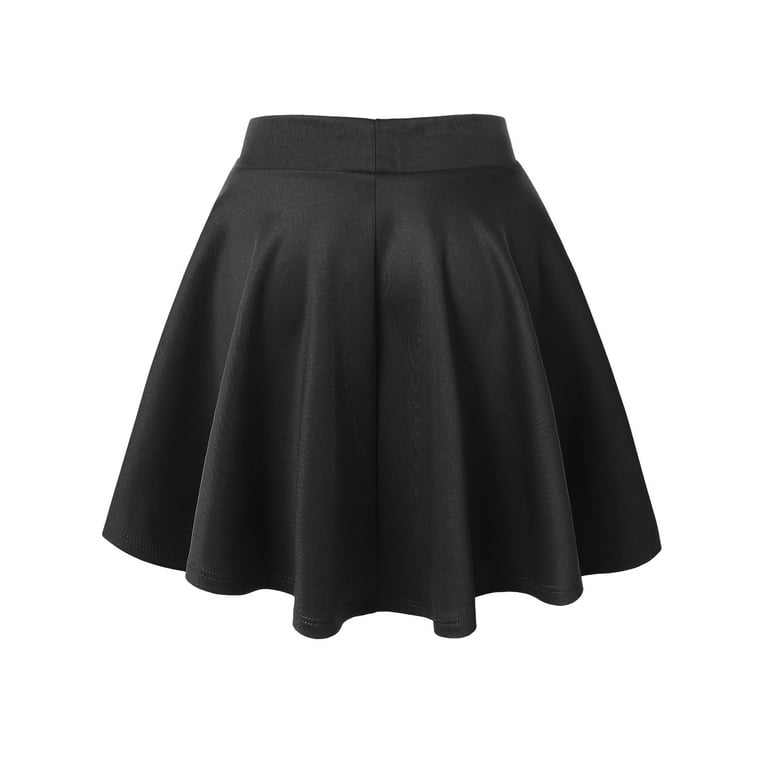The Ethics of Candid Photography
Candid up skirt! The realm of candid photography is complex. It teeters on the line between capturing raw moments and respecting privacy. Ethics play a huge role in this genre. Photographers must consider their intentions. Are these photos for art? Or do they intrude on people’s private moments?

Taking a photo of someone without their knowledge can be an issue. It may capture a person in an unguarded moment. While some see it as an art form, others view it as an invasion. It’s vital to weigh public interest against individual privacy.
The act of candid up skirt photography raises even more ethical questions. It focuses on taking pictures under a person’s skirt without consent. This kind of photography is not only unethical, it infringes on personal decency.
In the public domain, capturing images may be legal. But it doesn’t always mean it’s moral. Photographers should ask themselves a critical question. Is it right to prioritize their desire to snap photos over the subject’s unawareness?
Responsible photographers often follow a code of ethics. They respect their subjects’ dignity. They avoid deception in capturing images. True professionals in the field understand the impact of their work. They aim to maintain integrity in their practice. They never compromise the subjects’ respect for the sake of a photo.
To sum up, candid photography walks a fine line. Photographers should be aware of their moral obligations. They must never forget the importance of consent and respect in their work.
Understanding Consent in Public Photography
Consent is a cornerstone in the debate over public photography, especially concerning candid up skirt imagery. It separates ethical practice from potentially harmful actions. In public settings, understanding and obtaining consent can be challenging. Photographers navigate a blurry line between public interest and personal privacy.
Here are key points to consider about consent in public photography:
- Knowledge and Approval: Ideally, photographers should seek explicit consent from people they wish to photograph. When that’s not feasible, as in large public events, they should at least aim for implied consent, where subjects are aware of and do not object to being photographed.
- Expectations of Privacy: Even in public places, individuals may have zones of personal space they reasonably expect to remain private. Capturing images within this space, particularly in the manner of candid up skirt photography, violates this expectation and is inherently unethical.
- Legal Boundaries: Laws on privacy and image rights vary by region, but there’s a trend toward strengthening sanctions on non-consensual photography, including candid up skirt photos. Photographers must stay informed to avoid legal pitfalls.
- Ethical Dilemmas: Incidents where consent is not clear-cut can pose dilemmas for photographers. They must then rely on their moral compass and ethical guidelines to navigate these gray areas.
In essence, responsible photographers prioritize consent. They respect the people they capture in their lenses and the boundaries of the law. They understand that while the public domain offers many freedoms, it does not free them from the responsibility to respect others’ privacy and dignity.
Legal Consequences of Non-Consensual Photography
Engaging in non-consensual photography, especially concerning candid up skirt images, can lead to serious legal repercussions. The gravity of capturing such images without consent is increasingly recognized by the law. Many countries and states are enacting stringent measures to combat this violation of privacy.
Photographers must be aware of the legal risks:
- Criminal Charges: Depending on the jurisdiction, individuals caught taking candid up skirt photos may face criminal charges. This could include fines or even imprisonment.
- Civil Lawsuits: Victims of non-consensual photography often have the right to sue the photographer. They can seek damages for the harm and violation they’ve endured.
- Sex Offender Registration: In some places, those convicted for upskirting might be required to register as sex offenders. This has long-term impacts on one’s personal and professional life.
- Digital Misconduct Penalties: With the internet and social media, sharing such images can extend the legal consequences. New laws target the distribution of non-consensual photography online.
It’s crucial for photographers to realize that while they might be in a public space, this does not grant them immunity from the law. The act of taking candid up skirt photos trespasses legal and ethical boundaries. It can turn an art form into a criminal offense.
Photographers should stay informed on the laws of their respective regions. A good understanding of what constitutes consent and privacy in public spaces is essential. It will help avoid unintentional legal outcomes. The career and reputation risks are too high to ignore the potential consequences of non-consensual photography.

Privacy Expectations in Public Spaces
When we talk about public spaces, we assume a certain level of exposure. Yet, people still expect a degree of privacy. They believe their personal areas, like underneath clothing, are off-limits. This assumption applies even in crowded or open areas. The right to privacy does not vanish in public domains.
Here are important points about privacy expectations in public places:
- Inherent Boundaries: Even in public, people have unseen boundaries. These include the areas under their clothes. Breaking this boundary with candid up skirt photography is a severe violation.
- Social Norms: Society accepts that some personal spaces remain private. The act of upskirting defies this norm. It is a disgraceful action that shocks the public conscience.
- Reasonable Privacy: There’s ‘reasonable privacy’, even in open areas. People do not expect to be photographed in sensitive manners without their consent.
- Impact of Behavior: When photographers cross these privacy lines, it hurts trust. It can make people feel unsafe. It impacts how they behave in public later on.
In short, while public spaces imply openness, people maintain personal privacy expectations. A responsible approach to photography respects these boundaries. It declines to invade people’s private moments without their consent. This care upholds dignity and sustains public trust.
How Technology Affects Personal Privacy
The rise of technology brings challenges to personal privacy. Devices like smartphones make capturing images easy. People can take photos quickly and discreetly, often without being noticed. This advances candid photography but risks privacy. Photographs can now spread widely online within seconds. Social media platforms allow sharing to a vast audience. This can lead to unintended exposure of private moments. Many apps have features that might enable candid up skirt photos. These include high-resolution cameras and rapid sharing abilities.
Modern tech also increases surveillance capabilities. Public cameras capture us often without our knowledge. They can also pose a threat to personal privacy when misused. People wearing body cams or with sophisticated imaging tech can invade privacy.
Personal privacy is at stake with portable tech. It’s a tool to document our lives, but also a threat. We must handle it with awareness and caution. Tech advancements require stronger privacy protection measures.
In conclusion, tech impacts personal privacy greatly. We need to be mindful of our actions and the reach of our devices. Balancing tech use and privacy rights is crucial. It guards against invasions of privacy such as candid up skirt photography.

Legislation Against Upskirting
Upskirting is a serious privacy violation, and lawmakers react accordingly. Current laws aim to protect the dignity and privacy of individuals. Legislators across the globe are drafting and enforcing laws against upskirting.
Here’s an overview of legislative actions against upskirting:
- New Legislations: Many countries have introduced specific laws that make upskirting a criminal offense.
- Amendments to Existing Laws: Some jurisdictions extend current privacy laws. They now include upskirt photography as a punishable crime.
- Harsher Penalties: The penalties for upskirting often include jail time and hefty fines. They reflect the act’s severity.
- Awareness Campaigns: Along with laws, governments also launch campaigns. They aim to educate the public and prevent upskirting.
- Support for Victims: Legal frameworks often offer support to those affected by upskirting. This includes counseling and legal aid.
It’s clear that upskirting is trending towards harsher legal scrutiny. With tech making it easier to invade privacy, laws are adapting. They ensure perpetrators face consequences. These steps aim to deter the crime and protect personal privacy. People should understand that upskirting is illegal and socially unacceptable.
Photographers must stay current with laws in their area. Ignorance of the law is not an excuse. Those who engage in upskirting can no longer claim unawareness of its gravity. The law aims to uphold respect for all individuals in public spaces.
Preventative Measures and Personal Responsibility
To combat the invasions of privacy like candid up skirt photography, preventive steps are vital. People, artists, and lawmakers must work together. They can curb this unethical practice.
- Public Awareness: Educating the public about the ethics of photography is crucial. It builds a society that respects privacy. Workshops and online resources can help spread this message.
- Self-Regulation by Photographers: Each photographer has a duty to act responsibly. They must know and follow ethical guidelines. They need to avoid taking photos that invade private spaces.
- Technology Use: Users should handle tech with care. This includes knowing how to use device settings. For instance, one can disable cameras in sensitive areas.
- Reporting and Intervention: If you see someone taking inappropriate photos, report it. Bystanders can also play a role by intervening safely.
- Legal Knowledge: Stay informed about the laws against candid up skirt images. Knowing the consequences can deter such acts.
Every individual has a role in maintaining ethics in public spaces. It starts with personal responsibility. Each person’s actions add up to create a safer environment for everyone. Stop and think before you snap that photo. Always value the privacy of others as you would your own.
Impact on Society and Cultural Norms
The issue of candid up skirt photography has a profound effect on our society and culture. It challenges widely accepted norms about privacy and decency in public spaces. This form of photography not only assaults individual dignity but also disrupts societal values. Below, we examine its impact on society and cultural norms:
- Violation of Social Etiquette: ‘Upskirting’ is against the unspoken rules of respect and decency that govern public behavior. When these norms are broken, it contributes to a breakdown in social etiquette.
- Trust in Public Spaces: Knowing that one could be photographed in sensitive ways affects how people act and feel in public. It might make people more guarded and less open, eroding the trust that underpins social interactions.
- Empowerment Issues: Upskirting can disempower victims, making them feel vulnerable. It raises concerns about power dynamics and gender inequality in public and private life.
- Cultural Shifts: The prevalence of this invasive practice might lead to shifts in cultural perceptions of privacy. It can desensitize people to privacy violations, changing the way society views consent.
- Influencing Law and Policy: Public outrage against ‘upskirting’ has pushed for new laws and policy changes. This shows that society holds strong views against such violations and upholds the concept of personal privacy.
In effect, candid up skirt photography has implications beyond the immediate act of privacy invasion. It reflects on our cultural norms and shapes societal attitudes toward privacy, respect, and consent. As a society, it is crucial to take a stand against such intrusions to maintain the integrity of public spaces and our collective conscience.


